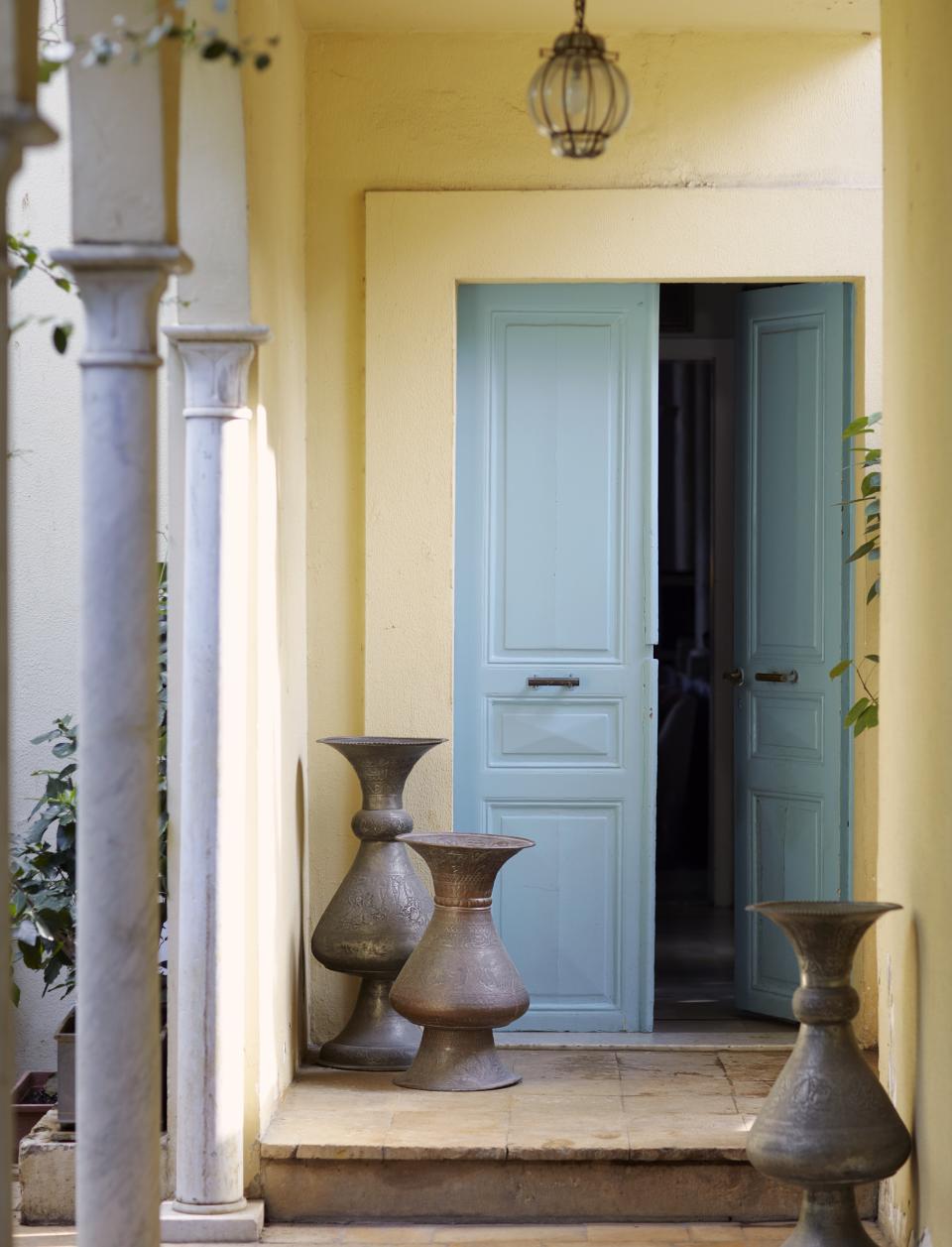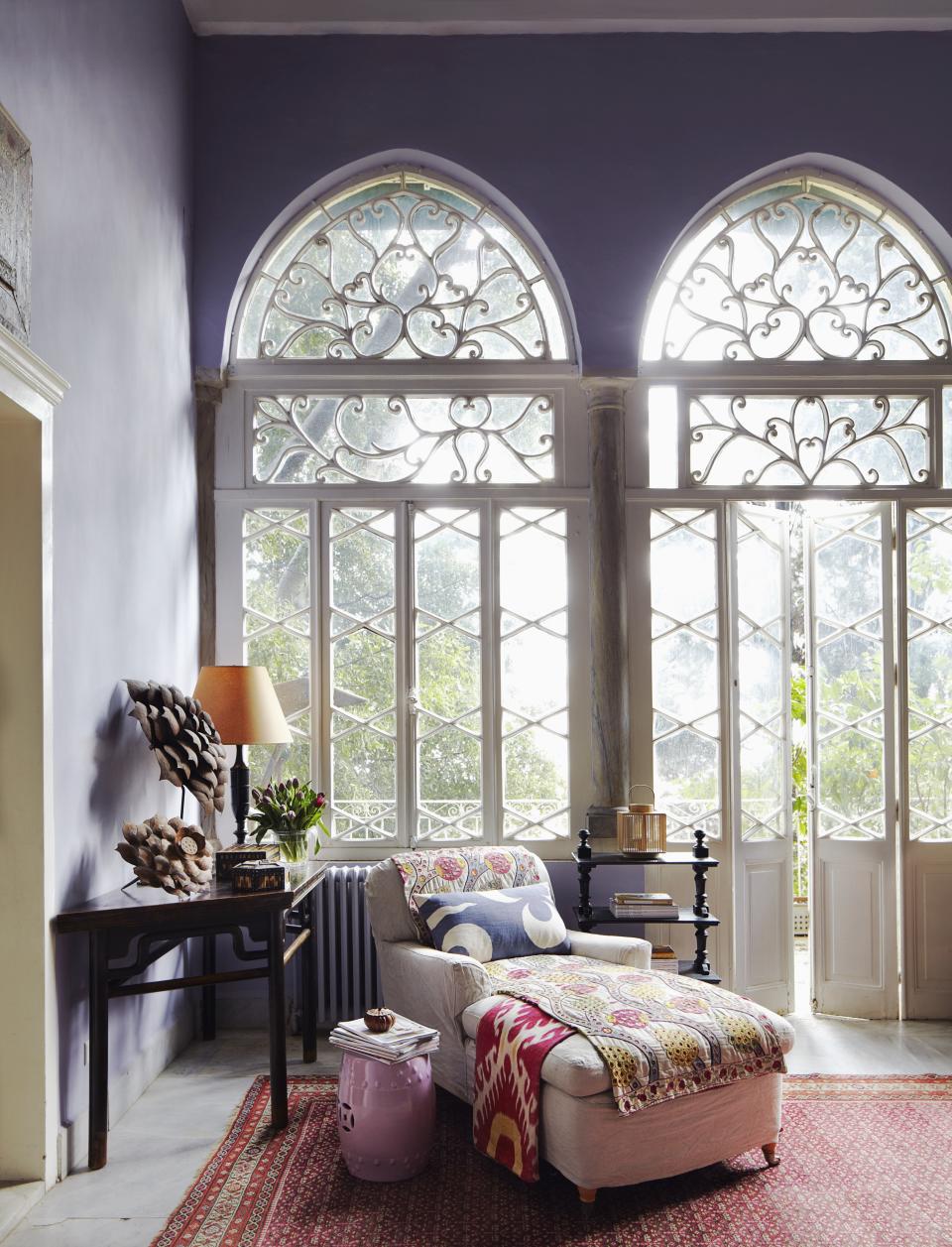An Insider’s Tour of Beirut
One of the signal joys of identifying destinations for the AD Access design journeys is reaching out to the many contacts that AD’s editors have all around the world. Name a city, and we’ve got insiders, longtime connections that we’ve made through work and friendship. Take Beirut, the Mediterranean port that for centuries has been a cultural crossroad as much as it has been a geopolitical flashpoint. Battle scars still remain here and there from the Lebanese Civil War that lasted from 1975 until 1990, and the political situation is complicated beyond imagining, but the so-called Paris of the East—which I have visited three times on magazine assignments over the years—was a city that AD and Indagare knew would be an intriguing travel offering. So as Indagare’s CEO, Melissa Biggs Bradley, flew off to take the measure of Beirut last year—reconnaissance is an integral part of the program—AD’s editors began contacting our friends in Lebanon, from architects to gallerists, to craft exclusive itineraries with elements of surprise.
The unexpected actually turned out to be an everyday occurrence in Beirut and the surrounding area. May Daouk, an interior designer whose romantic Ottoman villa was an AD feature, jumped at the chance to host the welcome dinner in her house, rounding out our two dozen guests (among them, AD100 interior designer Monique Gibson) with an equal number of her own friends, one being Soheil Hanna, a leading furniture dealer specializing in the work of French designer Jean Royère, who had a multitude of deluxe Beiruti clients in the 1940s and 1950s. Chez Daouk, a forest of candles flickered, Champagne flowed, and an expansive buffet of Lebanese specialities (including my beloved kibbeh nayyeh—a highly addictive lamb tartare—and a panoply of creamy unpasteurized cheeses) was presented in the lofty dining room until late into the evening.

Architect Annabel Karim Kassar and her husband, Radwaan, invited us to tour their under-renovation house, a lacy 19th-century villa not far from Daouk. Our heads protected by hard hats, we were led through high-ceiling rooms crisscrossed by scaffolding and hand-painted with all manner of 19th-century decorative elements—soaring birds, radiant flowers, cloudy skies. Then (drum roll, please), we were plunged into an archaeological excavation at the rear of the property, where workers preparing to install a swimming pool had recently uncovered a section of a Roman necropolis replete with ancient iridescent glass vessels and skeletons. The Kassars were thrilled by the discovery—“It makes the work more complicated, yes, but finding this is to travel back through time,” Annabel told us—and even had government experts on hand to tell us about Beirut’s Roman era and explain the challenges of building in the city, where every shovel plunged into the ground seemingly brings another layer of history to light. After that, we headed back to downtown’s chic Le Gray hotel, our group headquarters, to freshen up before going to the Kassars’ temporary though stylishly decorated rented house for dinner with more Beiruti insiders.
Acclaimed artist Nabil Nahas, who divides his time between New York City and his native Beirut, has transformed his family’s former silk factory outside of town into one of the most desirable houses in the world, a compound of buildings large and small that are set amid terraced gardens and hung with his highly textured, chromatically saturated canvases. Like May Daouk, Nahas asked a score of close friends, from a professor of comparative literature to an architect specializing in historic renovations, to join us for an afternoon buffet lunch where the spirited table talk ranged from the Lebanese Civil War to the rebuilding of Beirut in the 2000s to civic challenges to gardening, since climbing roses bloomed all around us.

Classic Beirut sites were on the AD Access itinerary, of course, including a guided tour of the National Museum of Beirut (a 1937 neo-Egyptian masterwork codesigned by one of Nahas’s uncles) with its important array of regional antiquities to the Nicolas Ibrahim Sursock Museum, an extravagant 1912 mansion turned art trove packed with an eye-opening collection of modern and contemporary Lebanese art that we explored after sipping some celebratory Champagne in the courtyard. We sampled award-winning wines at Batroun’s celebrated IXSIR vineyards, took an afternoon cruise to Beirut from the Roman ruins at Byblos, and had meetings with leading artisans and designers such as Maria Hibri and Hoda Baroudi, the founders of Bokja, a tastemaking atelier that applies custom and sometimes provocative embroidered fabrics onto antique and vintage furniture. Charitable organizations were part of the package, too, such as INAASH, an admired nonprofit organization that for 50 years has provided Palestinian refugee women with employment opportunities, namely making embroidered fashion, accessories, and objects for the home that keep Palestinian needlework traditions alive while also providing income to support them and their families.
Beautiful homes as well as bracing experiences are integral parts of the AD Access itinerary-building process, which couldn’t happen without the magazine’s unique worldwide network of design professionals and cultural leaders. Their enthusiastic embrace of the AD and Indagare partnership, which launched last year, leads us to unexpected sites they want our guests to see and deeply informed people they want us to spend time with. AD Access journeys are more than just four-star travel; each one is a week of inspiration, information, and, best of all, immersion.
For more information on the next AD Access trips to Beirut, please visit indagare.com/ad.
Originally Appeared on Architectural Digest

